Accepted Scientific Name: Escobaria sneedii Britton & Rose
Cactaceae (Britton & Rose) 4: 56 (fig. 54). 1923 Britton & Rose
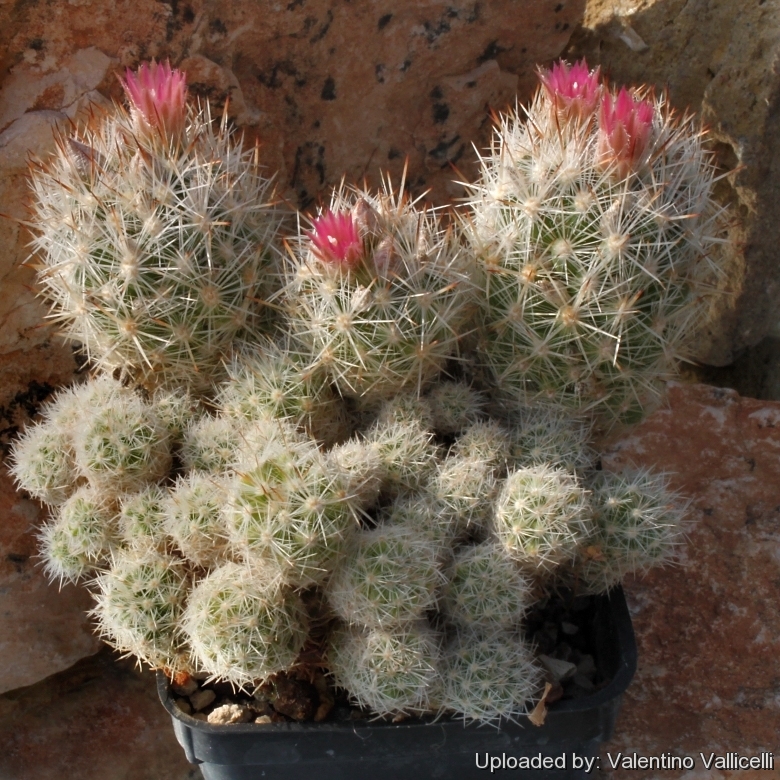
Coryphantha sneedii (Escobaria sneedii) Photo by: Valentino Vallicelli
Origin and Habitat: Escobaria sneediiSN|10397]]SN|10397]] is a Chihuahuan Desert endemic species known to occur in the Franklin Mountains of west Texas and Florida (Trans-Pecos region in El Paso, Hudspeth, Presidio, and Brewster counties) and on both the east and west slopes of the Guadalupe Mountains of southern New Mexico (Las Cruces ). USA.
Altitude: It grows at elevations of 600-2600 metres above sea level.
Habitat: This species is found often on steep, south-facing slopes in rocky Silurian-Ordovician-Cambrian limestone outcrops in Chihuhauan desert scrub or in conifer woodlands in the western trans-Pecos region.
Synonyms:
See all synonyms of Escobaria sneedii
back
Accepted name in llifle Database:Escobaria sneedii Britton & RoseCactaceae (Britton & Rose) 4: 56 (fig. 54). 1923Synonymy: 4
Accepted name in llifle Database:Escobaria sneedii subs. leei (Rose ex Boed.) D.R.HuntCactaceae Consensus Init. 4: 5. 1997 [Oct 1997]Synonymy: 5
back
Common Names include:
ENGLISH: Sneed's Carpet Escobaria, Sneed's Cory Cactus, Sneed's Pincushion Cactus, Silver-lace Cactus, Guadalupe Pincushion Cactus, Carpet Foxtail Cactus
Description: Escobaria sneediiSN|21585]]SN|10397]] is a low-growing, perennial stem succulent appearing completely covered by tight pure white spines. This plant is a possible relative of Escobaria villardiiSN|10397]]SN|21585]].
Habit: It is a cespitose, very freely clumping species, forming clumps 30 or more cm in diameter, usually composed of 10 to 100 stems but sometime larger, such that large specimens can have many hundreds of heads with lots of small immature stems.
Stems: Spherical when young, cylindrical or club-shaped with time, much-branched, obscured by spines, (2-)3-13(-27) cm long and 12-45(-70) mm in diameter. Green,
Roots: Diffuse when young, or sometimes with a single definite, fleshy tap-root, which runs some centimetres before reducing.
Tubercles: (2-)4-9(-12) mm hight.
Spines: 31-68 per areole, needle-like, very dense, obscuring stem, spreading parallel to stem surface, all white when mature; pinkish when growing.
Central spines: 1-5(-9), porrect, straight, radiating or appressed with bulbous bases, (2-)4-9(-17) mm long, snow white to rarely tan, some with dark pinkish or brownish tips, shortest one out of centre of areole, often protruding outward and downward.
Radial spines: 25-46(-52) appressed, slender, (3-)5-9(-14) mm long, snow white.
Flowers: Nearly apical pink to pale rose, (7-)11-25 mm long and in diameter, not opening widely. Outer perianth segments narrow, with fringed edges and prominent pinkish, brown, or greenish midveins and edged in very pale pink. Inner perianth segments paler, edges fringed at least halfway to pointed tips, sometimes notches in otherwise entire margins of petal ends. Filaments white to pinkish or magenta with yellow or orange anthers. Stigma white or yellowish white. Style white longer than stamens with 3-4 slender white stigma lobes (sometime pinkish or yellowish).
Blooming season: Spring (in habitat from March through May) Flower opens fully only about noon for 3-14 days.
Fruits: Crimson red, brownish-pink or green, not very succulent, thick, almost spherical, obovoid, club-shaped or cylindrical, 6-21 mm long and in diameter, but usually a little longer than thick, often with a few hairy scales, floral remnant persistent.
Seeds: 0,9-1,6 mm long, comma-shaped, bright reddish brown, brownish orange, pitted.
Subspecies, varieties, forms and cultivars of plants belonging to the Escobaria sneedii group
 Escobaria organensis (Zimmerman) Castetter, P.Pierce & K.H.Schwer.: it is less white with central spines yellow, tips often reddish brown and has a large average stem diameter. Distribution: Northern Franklin Mountains and the southern part of the Organ Mountains. New Mexico.
Escobaria organensis (Zimmerman) Castetter, P.Pierce & K.H.Schwer.: it is less white with central spines yellow, tips often reddish brown and has a large average stem diameter. Distribution: Northern Franklin Mountains and the southern part of the Organ Mountains. New Mexico. Escobaria sneedii Britton & Rose: has 6-20 central spines white with dark tips up to 30 mm long, radials 20-55 bristle-like white. Flowers pink. Distribution: Franklin Mountains (west Texas) and Florida and Guadalupe Mountains (southern New Mexico).
Escobaria sneedii Britton & Rose: has 6-20 central spines white with dark tips up to 30 mm long, radials 20-55 bristle-like white. Flowers pink. Distribution: Franklin Mountains (west Texas) and Florida and Guadalupe Mountains (southern New Mexico). Escobaria sneedii subs. leei (Rose ex Boed.) D.R.Hunt: has 30-90 radial spines about 1-2,5 mm long, white often brown at tip, sometimes with one to few short centrals. It is a neotenic form of Escobaria sneedii. Distribution: Eddy County, Guadalupe Mountains, New Mexico.
Escobaria sneedii subs. leei (Rose ex Boed.) D.R.Hunt: has 30-90 radial spines about 1-2,5 mm long, white often brown at tip, sometimes with one to few short centrals. It is a neotenic form of Escobaria sneedii. Distribution: Eddy County, Guadalupe Mountains, New Mexico.
Bibliography: Major references and further lectures
1) Brian Loflin, Shirley Loflin “Texas Cacti: A Field Guide” Texas A&M University Press, 26/Oct/2009
2) Jackie M. Poole, William R. Carr, Dana M. Price, Jason R. Singhurst “Rare plants of Texas: a field guide” (W. L. Moody Jr. Natural History Series) Texas A&M University Press, 30/dic/2007
3) United States. Bureau of Land Management. Las Cruces District Office “Proposed resource management plan amendment/final environmental impact statement for McGregor Range” U.S. Dept. of the Interior, Bureau of Land Management, Las Cruces District, 1989
4) Robert Sivinski, Karen Lightfoot “Inventory of Rare and Endangered Plants of New Mexico” New Mexico Forestry and Resources Conservation Division, Energy, Minerals, and Natural Resources Department, 1995
5) Del Weniger “Cacti of Texas and neighboring states: a field guide” University of Texas Press, 1984
6) Edgar Lamb “The illustrated reference on cacti and other succulents” Blandford Press, 1978
7) Edward Anderson “The Cactus family” Timber Press, Incorporated, 2001
8) James Cullen, Sabina G. Knees, H. Suzanne Cubey "The European Garden Flora Flowering Plants: A Manual for the Identification of Plants Cultivated in Europe, Both Out-of-Doors and Under Glass" Cambridge University Press, 11/Aug/2011
9) David R Hunt; Nigel P Taylor; Graham Charles; International Cactaceae Systematics Group. "The New Cactus Lexicon" dh books, 2006
10) Clive Innes, Charles Glass “Cacti” Portland House, 01/May/1991
11) N. L. Britton, J. N. Rose “The Cactaceae. Descriptions and Illustrations of Plants of the Cactus Family.” Volume 4, The Carnegie Institution of Washington, Washington 1923
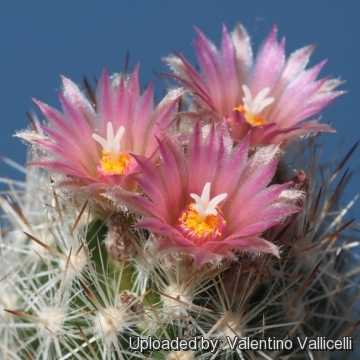 Coryphantha sneedii (Escobaria sneedii) Photo by: Valentino Vallicelli
Coryphantha sneedii (Escobaria sneedii) Photo by: Valentino Vallicelli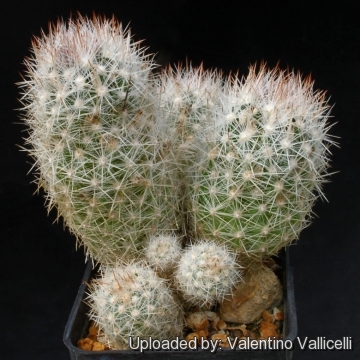 Coryphantha sneedii (Escobaria sneedii) Photo by: Valentino Vallicelli
Coryphantha sneedii (Escobaria sneedii) Photo by: Valentino Vallicelli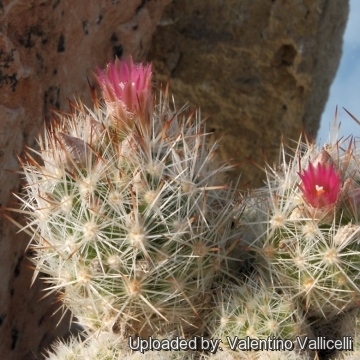 Coryphantha sneedii (Escobaria sneedii) Photo by: Valentino Vallicelli
Coryphantha sneedii (Escobaria sneedii) Photo by: Valentino Vallicelli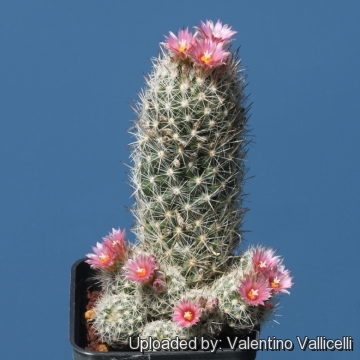 Coryphantha sneedii (Escobaria sneedii) Photo by: Valentino Vallicelli
Coryphantha sneedii (Escobaria sneedii) Photo by: Valentino VallicelliCultivation and Propagation: Escobaria sneediiSN|10397]]SN|10397]] comes from an area of summer rainfall and is supposed to be not the most easiest species in cultivation, as particularly sensible to moisture excesses. It will offset profusely.
Soils: Use a an open and free draining mineral compost with little organic matter (peat, humus) that allows therefore roots to breath (as it is rot prone).
Repotting: Repotting every 2-3 years. Use a small pot with good drainage.
Watering: It likes a winter's rest and should be kept completely dry during the winter months. From early spring onwards the plant will begin to grow and watering should be increased gradually until late spring when the plant should be in full growth. Water regularly during the summer so long as the plant pot is allowed to drain and not sit in a tray of water. During hot weather you may need to water the plants more frequently so long as the plant is actively growing. From late summer watering should be reduced to force the plant to go in to a state of semi dormancy, by autumn you should be back in to the winter watering regime. Keep dry with ample airflow in winter (but for outdoors cultivation it is very resistant to wet conditions, too). In the rest period no high atmospheric humidity!! Care must be taken with watering as they tends to become swollen and untidy in growth habit if given too much water and shade.
Fertilization: Feed with a high potassium fertilizer in summer.
Hardiness: Reputedly resistant to frost if kept on the dry side prior to, and during, cold weather (hardy to -17 C ° C, or less for short periods).
Exposition: The plant tolerates very bright situations, if kept too dark they may become overly lush and greener and could be prone to rotting due to over watering. Strong light encourages flowering and heavy wool and spine production, but is likely to suffer from sun scorch or stunted growth if over exposed to direct sunlight during the hottest part of the day in summer. .
Uses: It is an excellent plant for container growing. It always looks good and stays small. It look fine in a cold greenhouse and frame or outdoor in a rockery.
Pests & diseases: It may be attractive to a variety of insects, but plants in good condition should be nearly pest-free, particularly if they are grown in a mineral potting-mix, with good exposure and ventilation. Nonetheless, there are several pests to watch for:
- Red spiders: Red spiders may be effectively rubbed up by watering the plants from above.
- Mealy bugs: Mealy bugs occasionally develop aerial into the new growth among the wool with disfiguring results, but the worst types develop underground on the roots and are invisible except by their effects.
- Scales: Scales are rarely a problem.
- Rot: This species seldom suffer of cryptogamic diseases. Rot it is only a minor problem with cacti if the plants are watered and “aired” correctly. If they are not, fungicides won't help all that much.
Propagation: Direct sow after last frost or usually by offsets (readily available), or occasionally grafted. Seeds (no dormancy requirement) germinate in 7-14 days at 21-27° C in spring, remove gradually the glass cover as soon the plants will be well rooted (ca 1-2 weeks) and keep ventilated, no full sun for young plants! The seedlings should not be disturbed until they are well rooted, after which they can be planted separately in small pots. Cuttings: wait until the offsets that appear at the base of old clustered specimens are 1/3 the size of the parent and then detach and plant.














